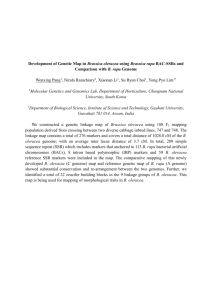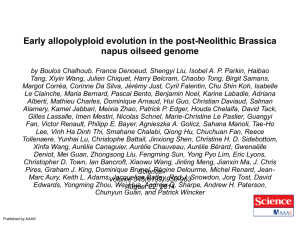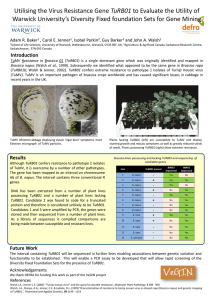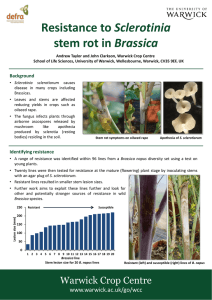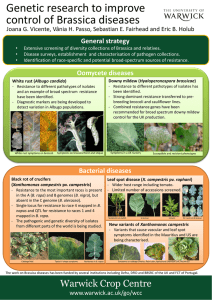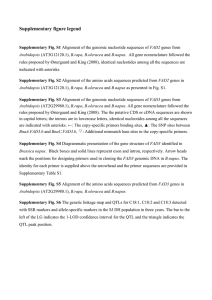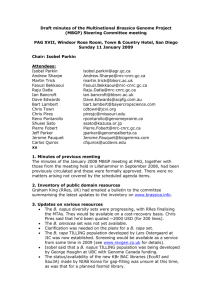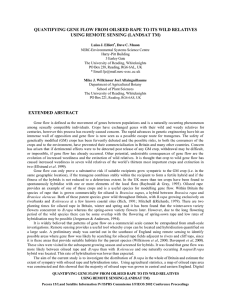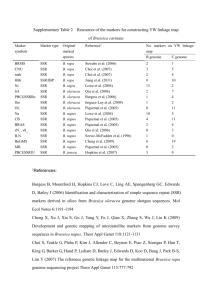Exploiting sources of resistance to Turnip yellows The problem
advertisement
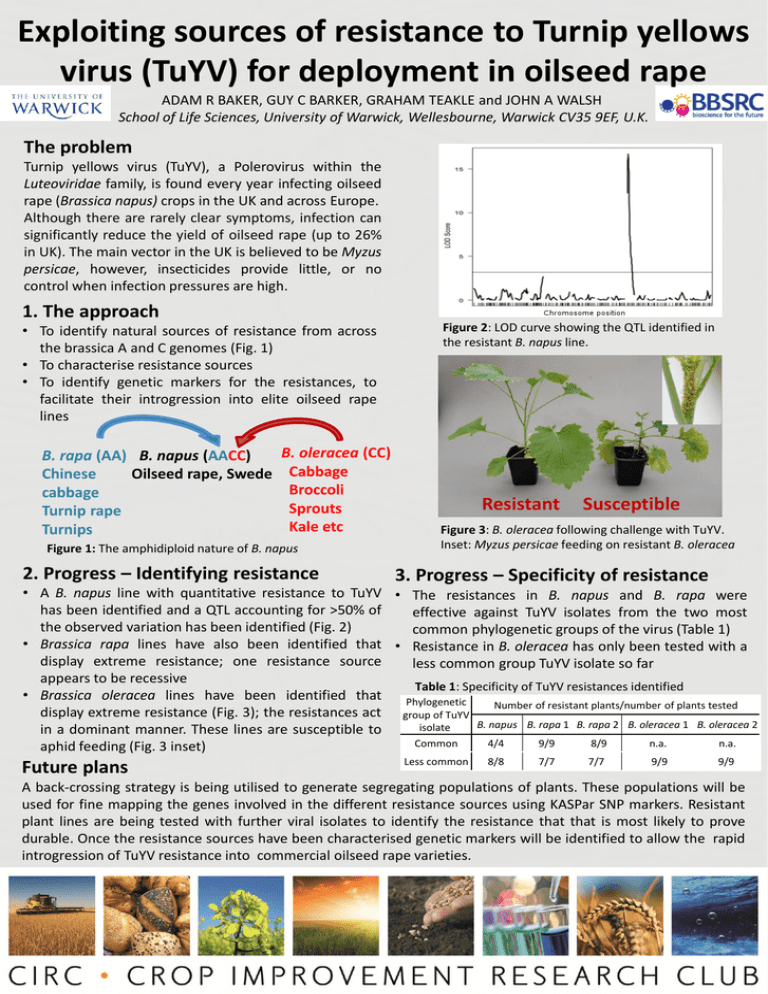
Exploiting sources of resistance to Turnip yellows virus (TuYV) for deployment in oilseed rape ADAM R BAKER, GUY C BARKER, GRAHAM TEAKLE and JOHN A WALSH School of Life Sciences, University of Warwick, Wellesbourne, Warwick CV35 9EF, U.K. The problem Turnip yellows virus (TuYV), a Polerovirus within the Luteoviridae family, is found every year infecting oilseed rape (Brassica napus) crops in the UK and across Europe. Although there are rarely clear symptoms, infection can significantly reduce the yield of oilseed rape (up to 26% in UK). The main vector in the UK is believed to be Myzus persicae, however, insecticides provide little, or no control when infection pressures are high. 1. The approach • To identify natural sources of resistance from across the brassica A and C genomes (Fig. 1) • To characterise resistance sources • To identify genetic markers for the resistances, to facilitate their introgression into elite oilseed rape lines B. rapa (AA) B. napus (AACC) Chinese Oilseed rape, Swede cabbage Turnip rape Turnips B. oleracea (CC) Cabbage Broccoli Sprouts Kale etc Figure 1: The amphidiploid nature of B. napus 2. Progress – Identifying resistance Figure 2: LOD curve showing the QTL identified in the resistant B. napus line. Resistant Susceptible Figure 3: B. oleracea following challenge with TuYV. Inset: Myzus persicae feeding on resistant B. oleracea 3. Progress – Specificity of resistance • A B. napus line with quantitative resistance to TuYV • The resistances in B. napus and B. rapa were has been identified and a QTL accounting for >50% of effective against TuYV isolates from the two most the observed variation has been identified (Fig. 2) common phylogenetic groups of the virus (Table 1) • Brassica rapa lines have also been identified that • Resistance in B. oleracea has only been tested with a display extreme resistance; one resistance source less common group TuYV isolate so far appears to be recessive Table 1: Specificity of TuYV resistances identified • Brassica oleracea lines have been identified that Phylogenetic Number of resistant plants/number of plants tested display extreme resistance (Fig. 3); the resistances act group of TuYV B. napus B. rapa 1 B. rapa 2 B. oleracea 1 B. oleracea 2 isolate in a dominant manner. These lines are susceptible to Common 4/4 9/9 8/9 n.a. n.a. aphid feeding (Fig. 3 inset) Future plans Less common 8/8 7/7 7/7 9/9 9/9 A back-crossing strategy is being utilised to generate segregating populations of plants. These populations will be used for fine mapping the genes involved in the different resistance sources using KASPar SNP markers. Resistant plant lines are being tested with further viral isolates to identify the resistance that that is most likely to prove durable. Once the resistance sources have been characterised genetic markers will be identified to allow the rapid introgression of TuYV resistance into commercial oilseed rape varieties.
